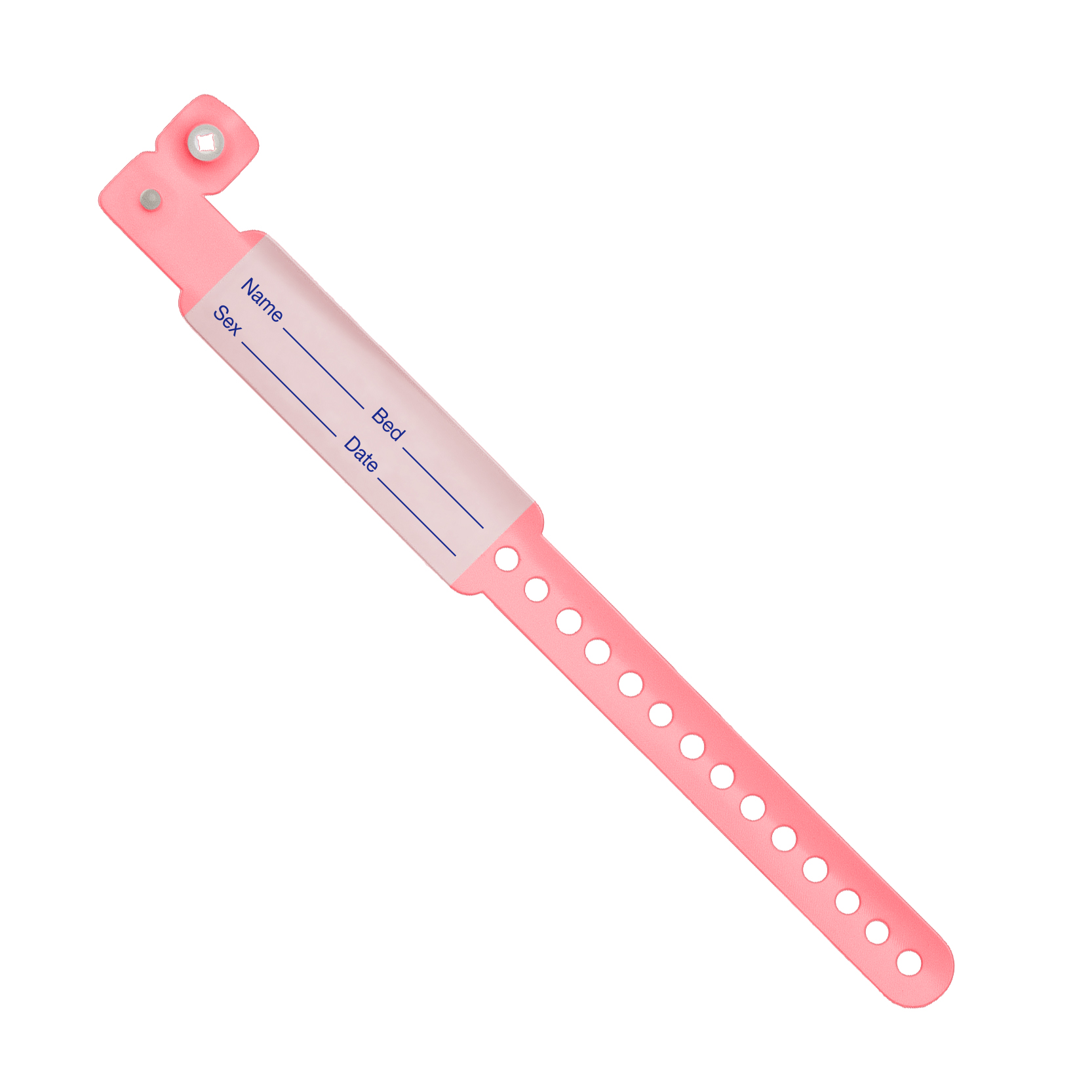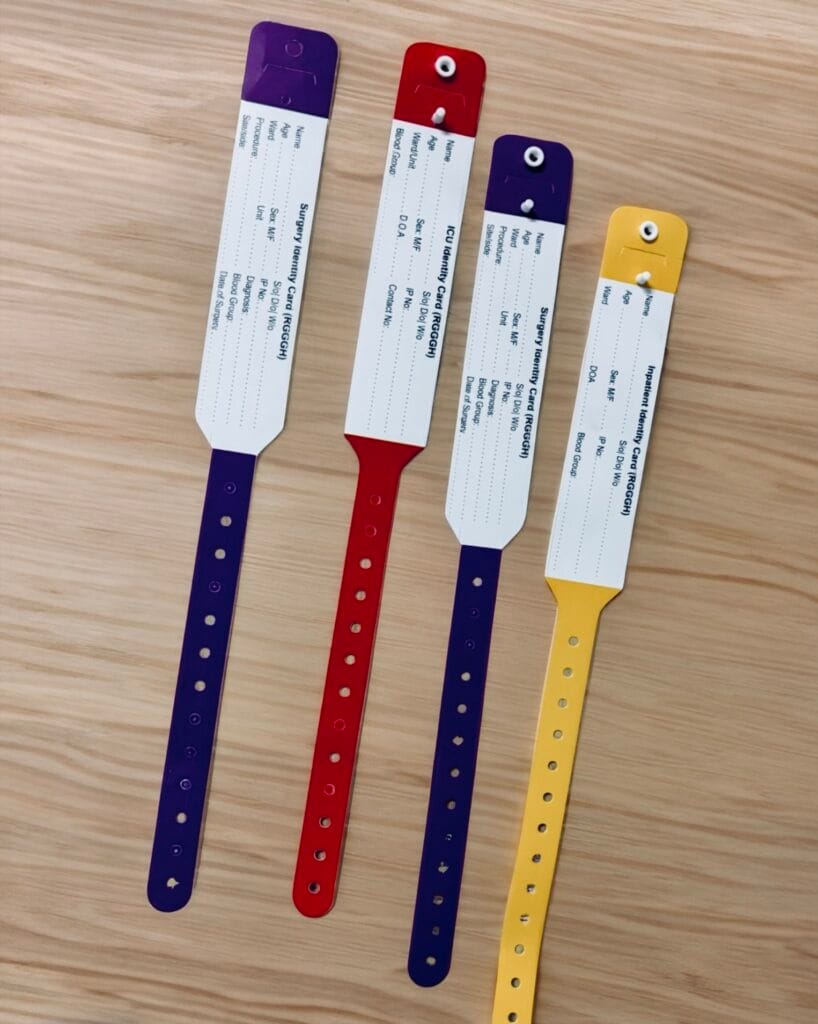Why Patient Identification Band is Important for Safe and Accurate Health Care
Streamlining Individual Care With Reliable Identification Bands
The implementation of efficient recognition bands is an essential aspect in enhancing individual treatment within healthcare settings. These bands not only serve to alleviate the threats related to individual misidentification however likewise improve communication among clinical workers, thus cultivating a safer setting. Different kinds of recognition bands cater to particular needs, from sturdy wristbands for adults to specialized bands for infants and vital situations. As the landscape of patient recognition progresses, one should take into consideration the ramifications of these systems on overall medical care delivery and individual results. What developments await in this crucial location?
Value of Person Identification
Making certain precise patient identification is vital in medical care setups, as it directly impacts the safety and security and top quality of care provided. Misidentification can lead to severe errors, including carrying out the wrong drug, performing wrong treatments, or miscommunicating vital person information. Such mistakes not just threaten patient safety however can also cause lawful ramifications and reduced count on health care systems.
Efficient person identification is fundamental to establishing a safe and secure environment where individuals receive appropriate and customized care. It helps with the precise documents of case histories, allergies, and therapy plans, guaranteeing that doctor have accessibility to necessary details in all times. Additionally, durable identification procedures assist enhance interaction among medical personnel, enhancing partnership and reducing the danger of errors.

Kinds of Recognition Bands
Identification bands play an important duty in keeping exact person documents and enhancing safety within medical care atmospheres. Various sorts of recognition bands are made use of to deal with the specific demands and demands of various patient populaces.

One more kind is the ankle joint band, which is specifically valuable for newborns and infants, guaranteeing that identification remains intact even throughout treatment treatments. Specialized bands, such as those for allergy notifies or fall threat signs, provide extra layers of safety and security by drawing instant interest to essential patient problems.
Lately, electronic identification bands have gained appeal, including barcodes or RFID technology that can be checked to quickly get individual data. These bands enhance process and lessen the risk of human mistake during patient recognition procedures.
Benefits of Reliable Identification
Reliable recognition of patients through making use of identification bands contributes significantly to general person safety and security and care top quality. By ensuring that each client is properly identified, doctor can properly match clinical therapies and procedures to the appropriate individual, reducing the danger of mistakes. This is specifically crucial in environments with high patient turnover, where the possibility for misidentification is greater.
Moreover, efficient identification bands enhance interaction amongst medical care teams. Clear and precise client identification promotes cooperation and ensures that all team members understand a patient's specific needs and medical background. This interaction is crucial for supplying coordinated treatment, specifically in emergency situations where time is crucial.

Inevitably, effective recognition through the usage of identification bands not just safeguards clients yet additionally advertises a culture of security within healthcare facilities (Patient Identification Band). By prioritizing accurate identification, healthcare organizations can improve outcomes and enhance the overall individual experience
Executing Identification Equipments
While the relevance of individual recognition is well recognized, the application of durable recognition systems postures a complicated difficulty for healthcare companies. Developing efficient identification systems requires a thorough strategy, incorporating modern technology, workers training, and procedure combination.
First, companies should pick appropriate identification innovations, such as barcode scanning, RFID, or biometric systems. Patient Identification Band. These modern technologies ought to be assessed based upon expense, usability, and compatibility with existing infrastructure. A pilot program can help determine potential concerns before major application
Following, find more information thorough training for personnel is vital. All personnel need to comprehend the relevance of precise individual identification and excel in making use of the chosen technologies. Regular training updates and assessments can reinforce best methods and ensure ongoing conformity.
Additionally, healthcare organizations should develop standard treatments for individual recognition across all departments, reducing disparities and enhancing interaction. Routine audits can assist recognize voids in adherence to these protocols.

Eventually, an effective application of recognition weblink systems not only boosts person safety yet additionally promotes a culture of liability and diligence within health care setups, making certain reliable and regular patient treatment.
Future Trends in Individual Recognition
Improvements in modern technology are readied to change client identification practices in medical care setups. The integration of biometric recognition methods, such as fingerprinting and face acknowledgment, is anticipated to boost accuracy and security. These innovations can dramatically decrease the danger of misidentification, making certain that patients obtain the appropriate treatments and drugs.
Additionally, the application of blockchain modern technology for individual documents is obtaining grip. This decentralized method can offer a tamper-proof and safe and secure technique for managing person identities, thereby simplifying access to crucial information across various health care companies.
One more pattern is the boosting usage of mobile health applications that leverage QR codes for patient identification. These applications permit real-time updates and easy access to person information, encouraging healthcare specialists to make educated choices swiftly.
Additionally, man-made intelligence (AI) is poised to play an essential function in assessing client recognition data, determining patterns, and predicting potential recognition errors before they take place.
As these modern technologies evolve, they promise not only to boost individual safety and security however also to enhance the general performance of health care delivery systems. Welcoming these developments will be essential for future-proofing patient treatment methods.
Final Thought
To conclude, effective recognition bands are vital for enhancing patient safety and care high quality within health care setups. By reducing the risks related to misidentification, these bands facilitate exact and timely info access, ultimately enhancing communication among doctor. The application of robust recognition systems not only fosters a society of security yet additionally settings health care organizations to adapt to future trends in individual identification innovation, making sure ideal end results for clients in varied medical settings.
As the landscape of patient recognition you can look here advances, one need to think about the implications of these systems on general healthcare shipment and individual results.Efficient individual recognition is basic to developing a secure setting where individuals get tailored and ideal treatment. Inevitably, focusing on effective person identification strategies not only promotes a society of security yet likewise contributes to enhanced patient end results and general satisfaction with health care solutions.
Efficient identification of clients via the use of recognition bands adds considerably to overall individual safety and care high quality. The execution of durable identification systems not only fosters a culture of safety and security yet likewise placements health care institutions to adjust to future patterns in person recognition innovation, making sure optimum end results for people in diverse medical environments.